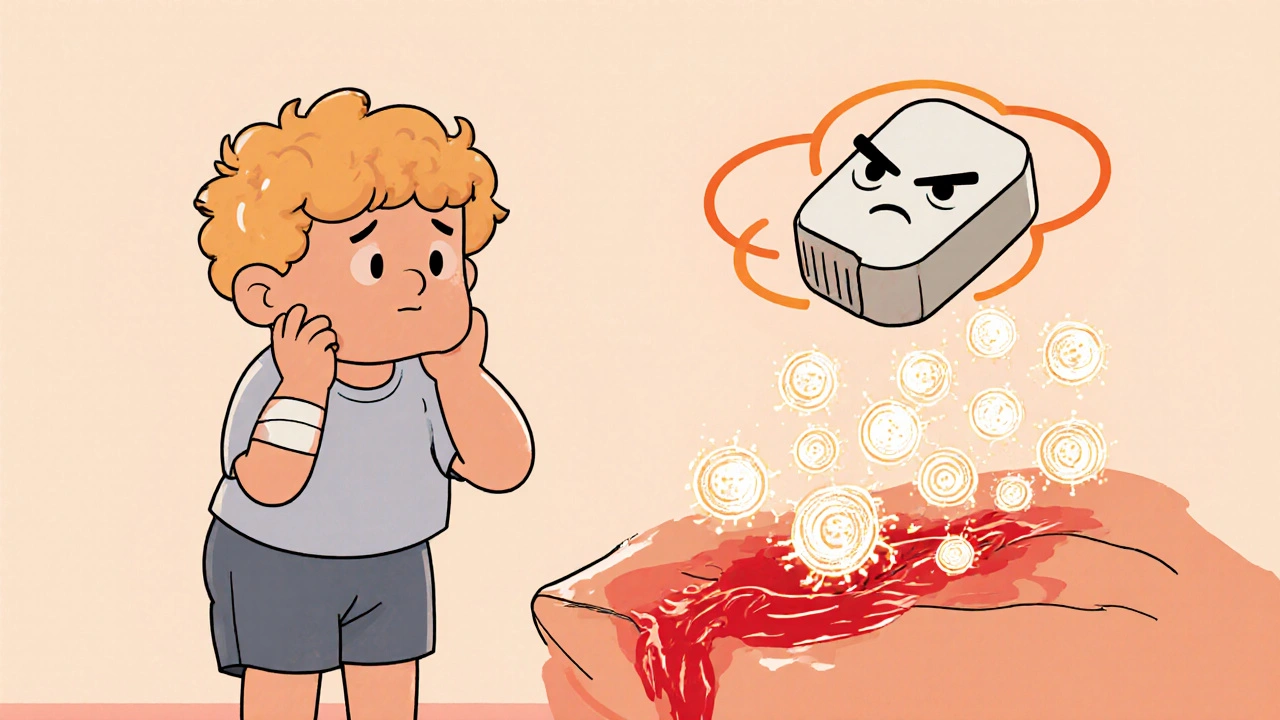Wound Healing: What Works, What Doesn’t, and How to Speed Up Recovery
When your skin gets cut, scraped, or burned, your body doesn’t just sit around—it jumps into action. This process is called wound healing, the body’s natural way of repairing damaged tissue through four overlapping stages: hemostasis, inflammation, proliferation, and remodeling. Also known as tissue repair, it’s not magic—it’s biology, and it can be helped or harmed by what you do next. Too many people think a bandage and some antiseptic are enough. But if you skip the basics—like keeping it clean, moist, and protected—you’re not just slowing things down, you’re inviting infection.
Wound healing isn’t the same for everyone. Diabetics, older adults, and people with poor circulation often heal slower because their blood flow is limited. That’s why wound infection, a complication where bacteria invade the damaged tissue and delay healing is so dangerous. A red, swollen, oozing wound isn’t just ugly—it’s a sign your body is losing the fight. And wound dressing, the material used to cover and protect the injury during healing isn’t just padding. The right one keeps out germs, holds in moisture, and lets your skin breathe. Gauze? Sometimes. Hydrocolloid? Often better. Antibiotic ointment? Only if needed—overuse breeds resistance.
What you eat matters more than you think. Protein is the building block of new skin. Zinc helps cells multiply. Vitamin C isn’t just for colds—it’s needed to make collagen, the glue that holds new tissue together. Skip the junk food and focus on lean meat, eggs, beans, citrus, and leafy greens. And don’t smoke. Nicotine cuts off blood flow like a turned-off faucet. If you’re trying to heal, quitting isn’t optional—it’s essential.
Some home remedies help. Honey has been shown to fight bacteria and keep wounds moist. Aloe vera can soothe minor burns. But don’t slap on turmeric paste or raw garlic hoping for miracles—those can irritate and make things worse. And never ignore a wound that won’t close after two weeks, or one that gets worse instead of better. That’s not normal. That’s a signal to see a doctor.
Below, you’ll find real comparisons and clear guides on what actually works in wound care—from the best topical treatments to the hidden risks of common practices. No fluff. No myths. Just what you need to know to heal faster and avoid complications.

Aspirin and Wound Healing: Does It Really Speed Up Recovery?
- Nov, 1 2025
- Daniel Remedios
- 14 Comments
Aspirin reduces pain and swelling, but it can slow down wound healing by interfering with inflammation and clotting. Learn why acetaminophen and proper wound care are better choices for recovery.
